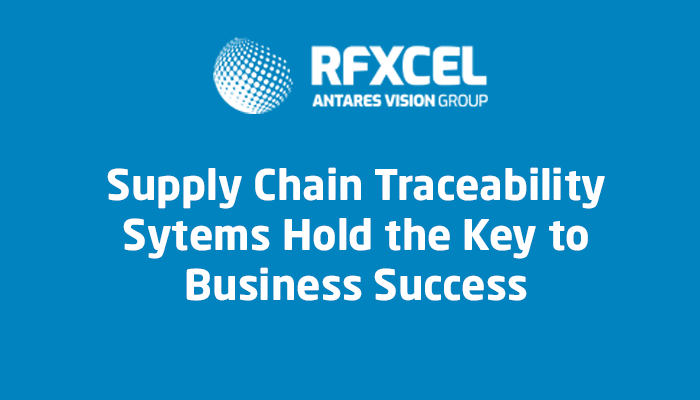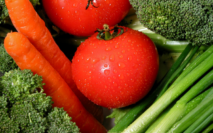One of the best ways to get more people to buy your products is to inspire consumer confidence. And one of the best ways to increase consumer confidence is to insist on airtight food safety protocols, which absolutely should include supply chain traceability systems.
Are there some areas where your food safety can improve? It’s always a good idea to periodically reflect on what you and your team are doing. This will allow you to improve on weak spots in your food supply chain. Supply chain traceability systems are a huge help.
Most important, the ability to trace everything in your supply chain ensures you are delivering safe food to your customers — and building consumer confidence. It also helps ensure compliance with regulations. So, if you don’t have traceability in your supply chain, you should consider implementing a system as soon as possible.
Let’s take a closer look at the benefits supply chain traceability systems can bring to your business.
What are supply chain traceability systems?
Supply chain traceability systems are a powerful tool for any industry. They give you the ability to know where your ingredients and finished products have been and where they’re going as they move through your supply chain, through the “life cycle” of your business. They are particularly helpful with maintaining product safety and minimizing and proactively managing issues that could harm your business, such as a recall.
Advantages of supply chain traceability
There’s no doubt supply chain traceability systems will save your company time, money, and effort. But what specifically can they do for you? Let’s look further into the benefits of implementing a food safety program with supply chain traceability.
Effective recall management
Supply chain traceability is a key part of recall management. The food industry is one of the most vulnerable to recalls. A recent example is Tyson Chicken. On July 3, 2021, the food giant had to recall almost 9 million pounds of ready-to-eat chicken in the United States. Thanks to supply chain traceability, however, Tyson could work quickly and effectively with the U.S. Department of Agriculture, pinpointing when the products were made and what labels were on the packaging, notifying consumers, and mitigating further troubles.
Needless to say, a recall of any size can hurt profitability and brand reputation. But supply chain traceability systems help manage damage. As we’ve discussed before, having the proper systems in place for effective recall management is paramount for protecting your business’ profitability and your brand reputation.
Regulatory compliance
Another advantage of implementing supply chain traceability systems is meeting regulatory requirements. The FDA keeps a watchful eye over food supply chain processes in the United States. And, with much of our food traveling far and wide before it reaches our plates, those processes require many moving parts. Being aware of where your food has been, where it is now, where it’s going, who is handling it, and how long it’s been in transit are all helpful metrics to keep your operation in compliance with the FDA and other regulatory agencies.
The FDA is pushing hard for more traceability standards, and consumers are more aware of where their food is coming from and demanding more information about what they eat. This is yet another reason why traceability is so important today.
Maximized efficiency
Being able to trace (and track) your products as they move through your supply chain also allows you to identify inefficiencies and bottlenecks. In other words, end-to-end traceability maximizes operational efficiency. It will enable you to see which processes are working well and which ones aren’t.
Supply chain traceability systems also help you cut costs. If you have rich data that quantifies that a particular process (or trading partner) is inefficient, you can take steps to improve it or remove it from your supply chain process.
Consumer engagement
Believe it or not, traceability will also help your sales. Customers love stories — and they’re demanding more information about the products they buy. Smart companies will use their supply chain traceability systems as part of their marketing, connecting with consumers by telling their story and sharing information about their products.
You see this all of the time in the food industry. In commercials, companies highlight how far their products have traveled and how much care goes into making, packaging, and shipping them. This kind of advertising paints a picture of the journey the products take to arrive in a customer’s home and emphasizes the qualities people want (e.g., salmon from Alaska or peaches from Georgia). Being able to “play up” the source and the journey will make your food products more appealing to shoppers.
Communicating with stakeholders
You always need to consider input from stakeholders. Supply chain traceability is an effective way to keep them happy. Making stakeholders aware of this information is known as supply chain transparency.
Supply chain transparency is an important part of your business. While food safety and quality are important, you also need to keep your trading partners in the loop. Any effective supply chain transparency plan has three main components.
The first component is the “what” of your supply chain traceability. What information are you going to share with your stakeholders? You’re also going to want to determine what format you’re going to use to display the information.
The next step is to decide the “who.” Who needs to see this information? Several different groups might need it, such as internal stakeholders, vendors, suppliers, clients, and consumers. You’ll also want to consider why they need to have it.
Last, you’ll want to consider the “when.” When are your people going to get this information? And how often?
You’ll also need to decide how often to update your information. Today, the trend is toward real-time updates. This is the ideal scenario, but it can be a challenge to attain. Supply chains involve a lot of moving parts and have many different nodes or tiers. Providing real-time updates in this complex framework requires efficient, streamlined operations utilizing supply chain traceability systems.
Supply chain mapping
Supply chain mapping — the process of mapping every tier of your supply chain with easy-to-follow imagery — is an effective way to keep all your stakeholders happy. A supply chain map doesn’t show every person involved in the process; instead, it shows all of the players within each tier of the supply chain.
One of the benefits of supply chain mapping is that it presents an opportunity for risk assessment. Seeing your supply chain clearly mapped out allows your management team to decide which areas need to be carefully monitored. You can also analyze your supply chain with a “bird’s-eye view” and decide if you need to make adjustments for greater efficiency.
Safer, healthier food
Today, grocery stores are full of food that’s touted as being locally sourced, sustainably caught, and so on. How can companies make and prove these claims? With end-to-end supply chain traceability data. Making these types of claims requires companies to make sure they are tracking the right metrics to support them. Companies also need to leverage the correct technology to support these initiatives.
Examples of how supply chain traceability systems work
How do companies achieve end-to-end supply chain traceability? Keeping track of your products and all the important metrics requires modern technology.
One of the ways companies are doing this is by putting QR codes and 2D Data Matrix codes on their packaging. These codes contain important information and can be scanned as products move through the supply chain. This allows vendors, suppliers, and people responsible for transport to “check the food in” at various points throughout the process and add important data, including critical tracking events (CTEs) and key data elements (KDEs).
Leveraging this technology is a critical aspect of today’s supply chain traceability systems. It helps companies keep track of where their products are at all times, throughout all nodes of the supply chain. For more information about it all works, download our new white paper, “Traceability in the Food Supply Chain.”
A quick word about blockchain
As technology moves forward, supply chain traceability systems also continue to evolve. One of the newest technologies with traceability applications is blockchain.
Most people probably associate blockchain with cryptocurrencies such as Bitcoin. One of the reasons Bitcoin is so valuable is because it can be traced across the internet via the blockchain. Investors and computer programmers can map each Bitcoin to its proper place on a global digital ledger.
This and other characteristics give blockchain tremendous functionality in a wide array of industries. For food in particular, blockchain can help companies achieve a “locked down” supply chain, providing indisputable, verified data and a level of security not possible with other technologies.
What do you think tracking food products in the same manner as cryptocurrency would do for supply chain traceability systems? It’s still in the early stages, but blockchain could revolutionize traceability. It’s a complicated subject, so we encourage you to download our white paper, “Blockchain-Based Supply Chain Traceability.”
Final thoughts
Supply chain traceability systems are an essential part of any business. But they’re especially important in the food industry. The safety and quality of your product is the most important part of your business. Consumers’ health depends on it. Your brand reputation depends on it. Your bottom line depends on it.
rfxcel can help. We have the software solutions you need for your business — for supply chain traceability, regulatory compliance, serialization, monitoring, and even vaccine track and trace.
Contact us today if you have any questions about supply chain traceability systems or would like to see a short demo of how our solutions can help you build your business, no matter what your business is.





